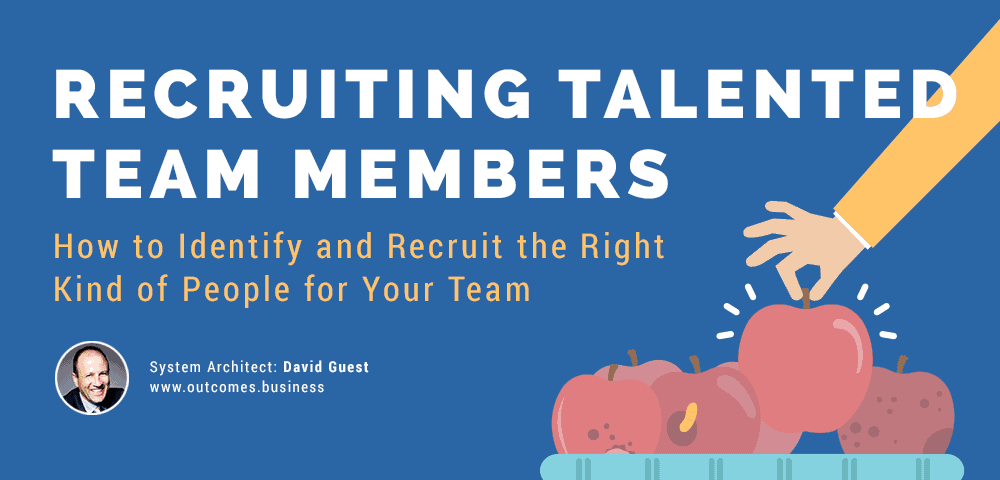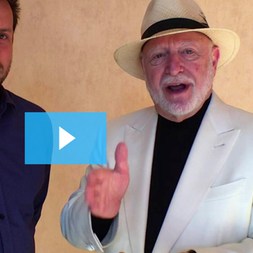
System Architect | David Guest: www.outcomes.business
These days it can be extremely common for a company to get hundreds, or even thousands of applicants for a job vacancy, especially if it’s a highly sought-after position in a prime location. You know that the large majority of these candidates are not going to be suitable, but how can you possibly narrow the list down without interviewing each and every one of them individually?
You may have found in the past that recruiting has been a complete disaster and your vacancy has attracted the wrong kind of people, but recruiting for an open position goes much further than putting a job ad out in the hope that the right candidate sees it. You need to make sure that you have a company which has a culture and reputation that will be attractive to the kind of employees that you want to hire, and then work through a process which effectively shortens the applicant list to a talented few.
By following the steps below, you can have an efficient recruitment process that takes you from establishing the kind of person you are looking for, right through to how to narrow down the long list of applicants. This process is designed to help you find and keep good people, with stages that can ensure you are left with an excellent short list of candidates to conduct 1:1 interviews with without taking up too much of your precious time.
How to Identify and Recruit Talented Team Members
Step 1. Ensure you’re clear on who you are as an organisation.
- Invest the time to build a picture of the organisation that’s going to attract the right type of candidate.
- Clearly define your organisational structure
- Be clear on the organisation’s vision, mission and culture
Tip! A result of creating an organisation that attracts high calibre candidates, is that inevitably, you’re going to attract low calibre candidates as well – this is why you will use the following steps to filter applicants.
Step 2. Define your ideal employee and their attitude.
- Clearly define the position, prepare the contract/job description
- When crafting your job ad, don’t just list out the minimum requirements to complete the job, tell the story of your organisation and where it’s going in future.
- Remember! You want to attract people who love what the company does, rather than people who just have the skillset required to do the job. You also want to attract people who have an attitude that aligns with your company’s core values.
Tip! Hire with the philosophy that attitude trumps skill. Obviously you need both but it’s recommend evaluating attitude first, then skill. It’s done this way because attitude is generally something that can’t be taught whereas skill can be taught.
Step 3. List your ad on your preferred platform.
- Ensure everything makes sense and that everything relating to the job is laid out clearly.
- Rather than listing out your phone number, or giving an email address to send resumes to, create a filtering mechanism.
Step 4. Create a filtering mechanism.
- When it comes to attitude vs skill: skill can be measured through testing or certification, but the only way that you can measure someone’s attitude is to ask them to do something and observe how they respond to your request.
- Create tasks for the applicants to complete and observe their behaviours so we can get a good idea of their attitude.
- Create a voicemail/recorded message that has 3 questions – this creates an even playing field, all candidates are getting the same information. This also allows you to listen to the recording of the applicant, so you can share with others in the organisation and get their opinion.
- This will probably filter about 50% of applicants straight away as often people will just send their resume, hoping that it’s enough to get them the job, even though the ad says, ‘don’t send your resume, ring this number’.
- This also allows you to systemise the filtering process, the owner doesn’t have to speak with every applicant, only those who are shortlisted.
Suggestion! If you have a lot of candidates who made it past the ‘first hurdle’, you might consider a group interview. If you only have a handful of candidates, you might opt to shortcut the group interview and go straight to the individual interview process.
Step 5. Conduct a group interview with all of your filtered applicants.
- This allows you to interview anywhere between 3 – 50 candidates, which is a huge time saver.
- Note down things about each applicant. Eg: Did they show up on time? How were they dressed? What was the dynamic between them and the other candidates? This helps to get a good picture of attitude and often there are a small number or people that shine/stand out.
Step 6. Set up one on one interviews with the short list of applicants from the group interview.
- Ask applications questions to determine if they’re the right fit for your company and the role. Refer to “Top Grading” by Brad Smart.
- Set some test tasks to ‘test drive’ the applicant.
Finding that perfect candidate will only come after you first define your company value’s and know what kind of person you are looking for. Since you may receive hundreds of applications, it’s definitely a good idea to introduce a filtering mechanism so that you can easily cut your list down to the ones who can follow instructions before going any further.
Conducting group interviews is a great time saver when you have a lot on your plate, as they give you an insight into a person’s behaviour and how they interact with others. This is certainly important when you want someone that is going to fit in to your company culture. By the time you reach the short list stage, you should be left with a few talented individuals who are likely to align with your company values and you can see if they will be capable of doing the job required by setting some test tasks.
System Architect – David Guest

David is no stranger to business – Having over 20 years of business experience in over 10 different businesses and diverse industries has given him the intimate understanding and knowledge of what businesses need to be successful.
It’s because of this extensive business knowledge that David has been able to repeatedly give his clients solid market proven methods for increasing business profitability and performance. More importantly, his clear communication style and ability to get things done means that the business owners he works with getting what they want out of their businesses in a remarkably short time.
For business owners struggling in competitive marketplaces David’s experience in developing, customer focused sales and marketing campaigns specifically designed to not only remove price competition but use it to your advantage, has proven time and time again how simple strategies, executed systematically will produce dramatic results.













